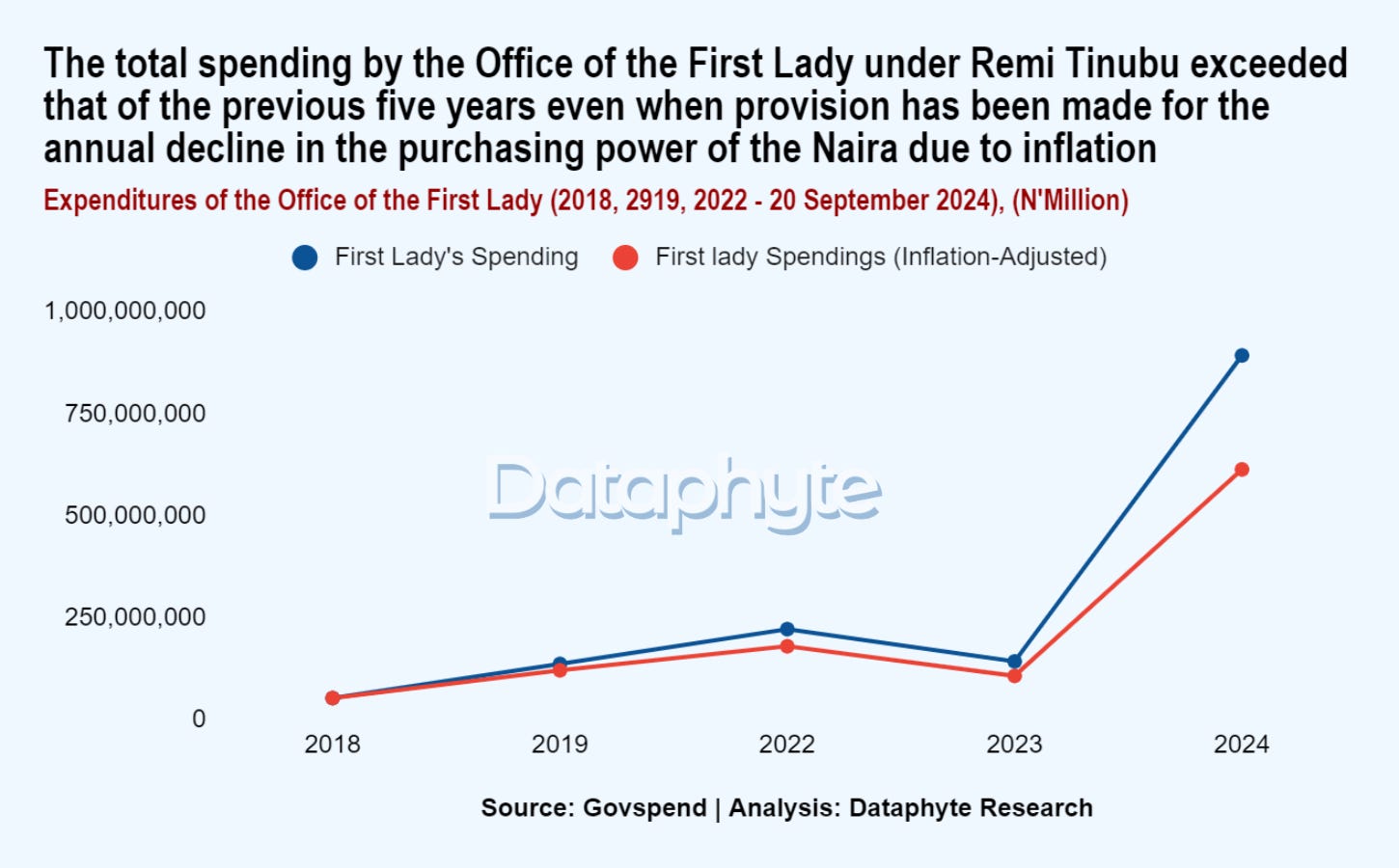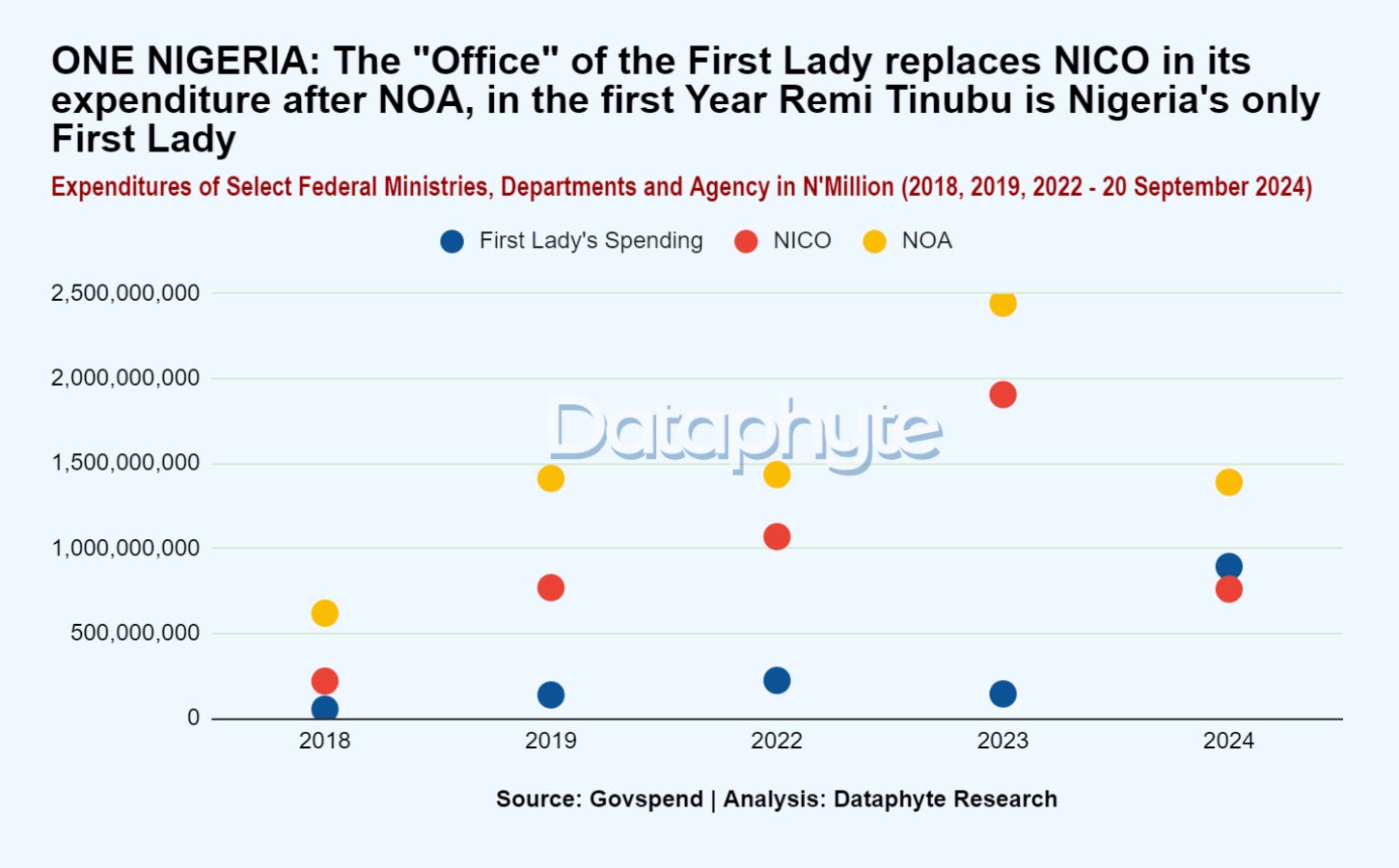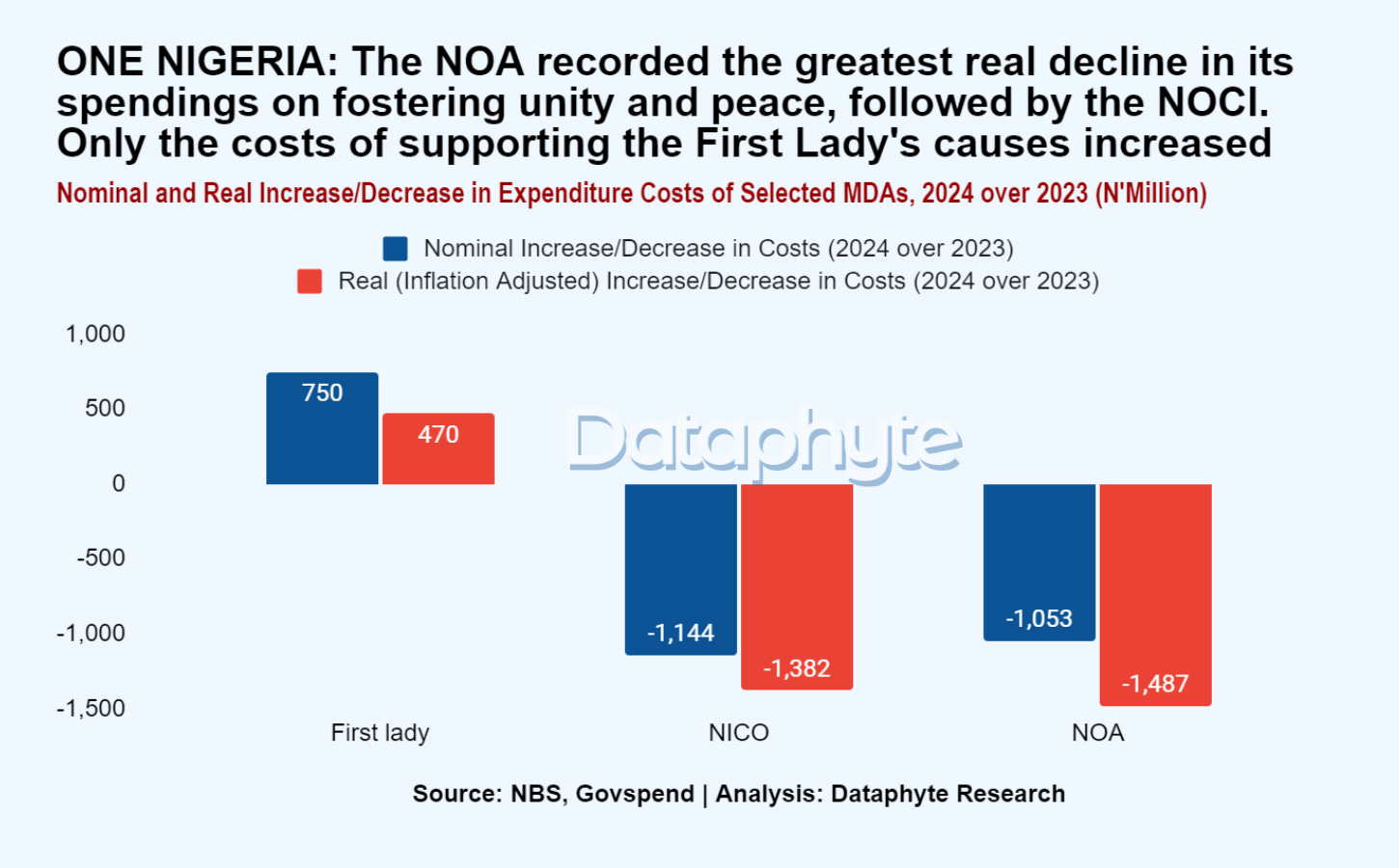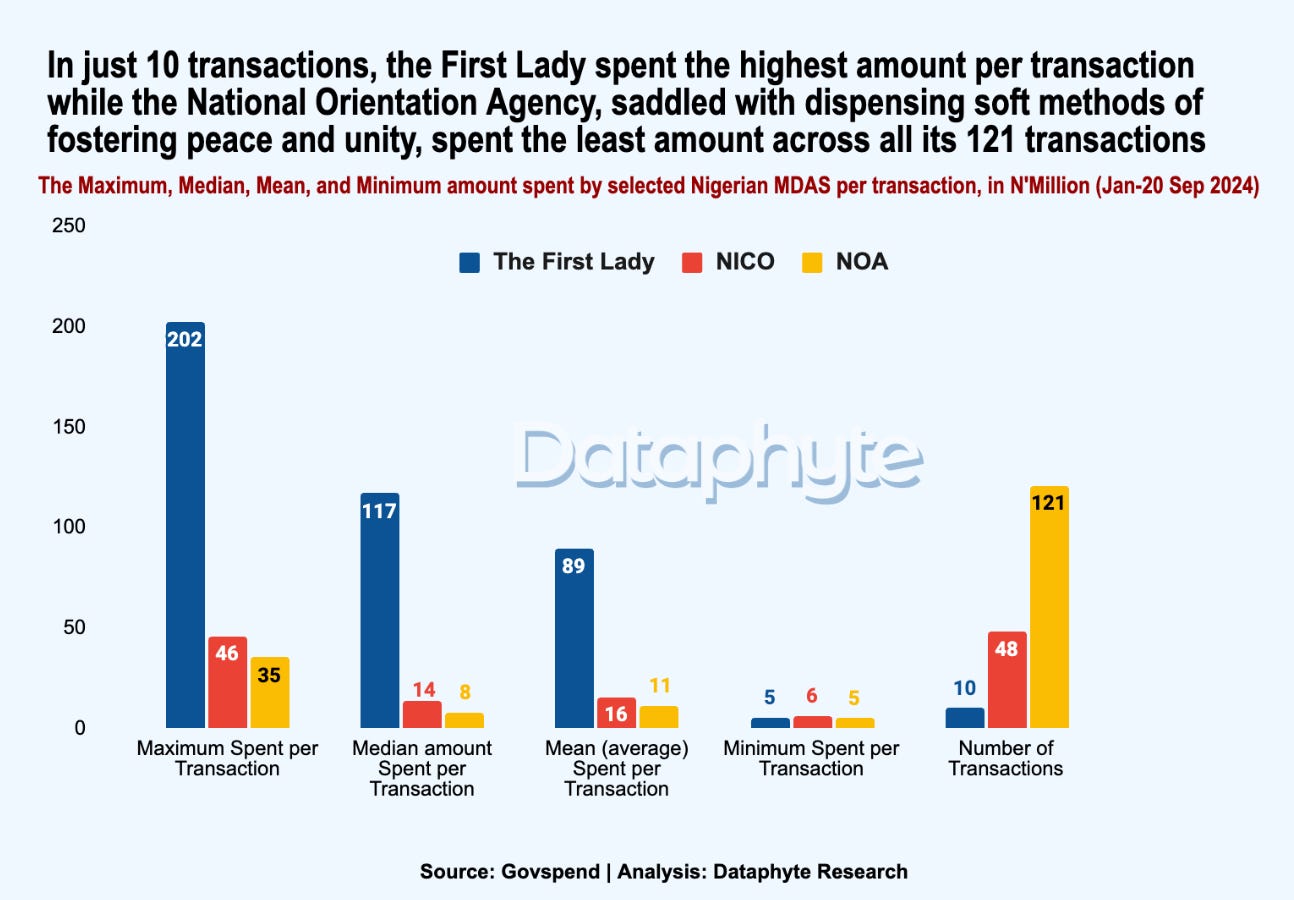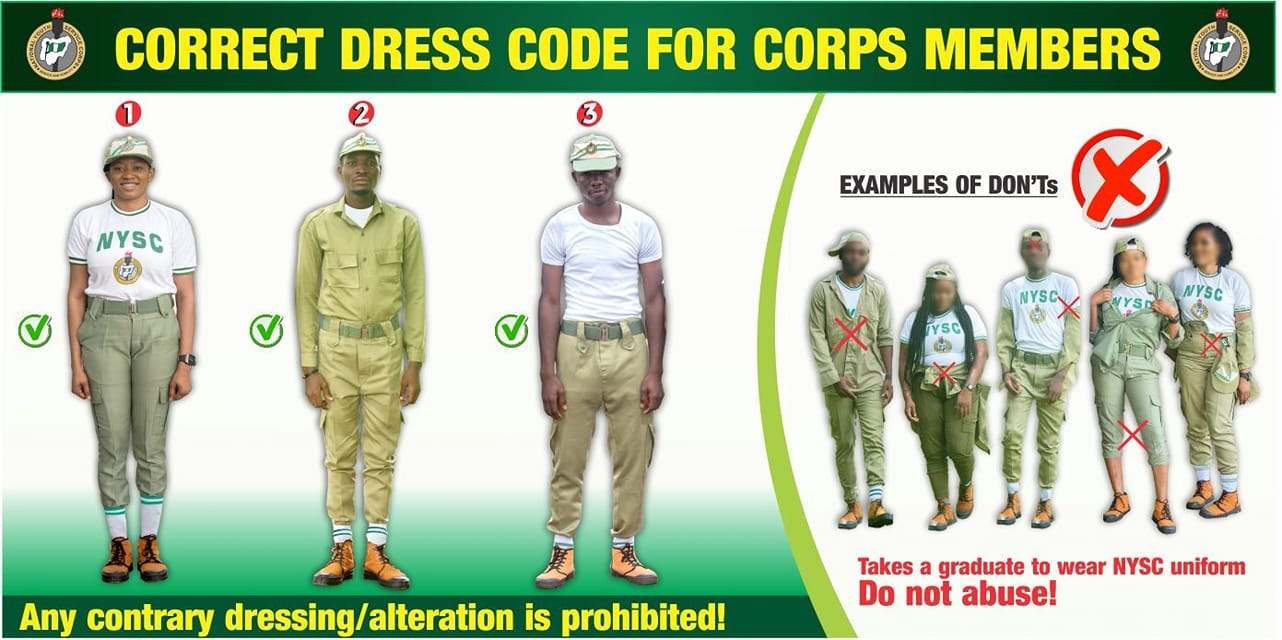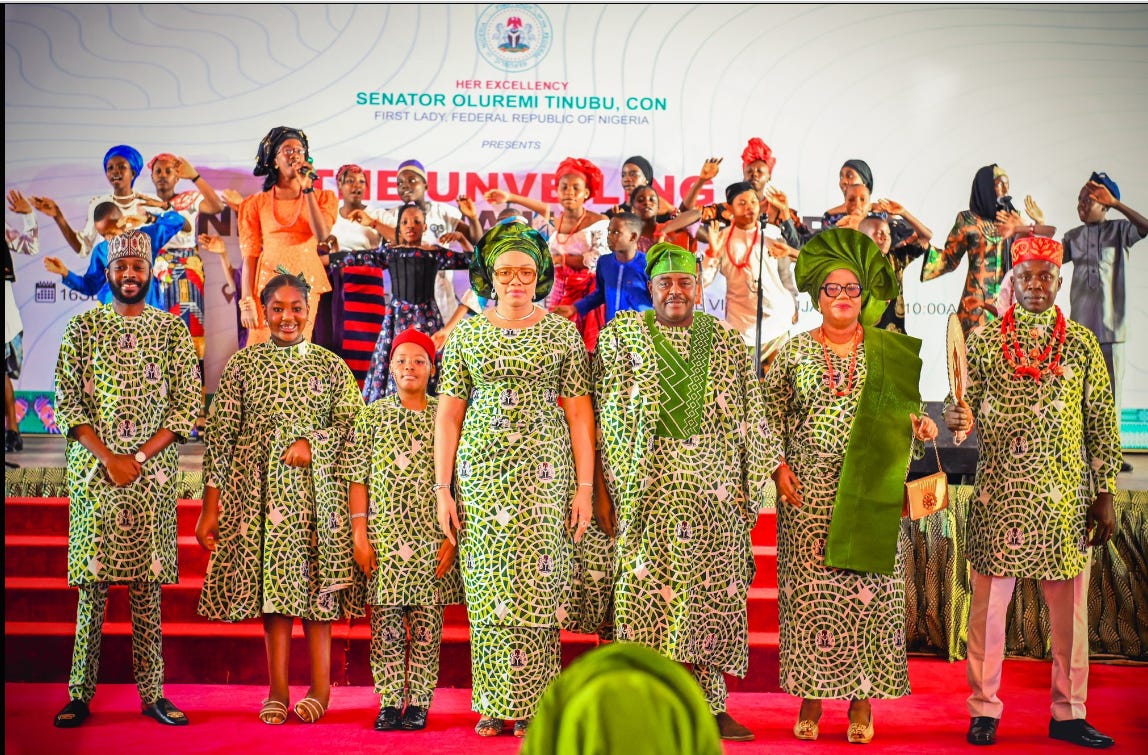One Nigeria Fabric: Remi Tinubu’s Remix of Remitting Tinctures
Nigeria’s first lady, Senator Oluremi Tinubu, has unveiled the One Nigeria/Unity Fabric, scheduled to be worn to celebrate the country’s Independence Day anniversary on October 1st.
The move seeks to promote unity in diversity - a sense of oneness among the different ethnic nationalities - as Nigeria celebrates 110 years of its forced union of peoples holding different values and worldviews by the British colonial government.
Lord Lugard, the British Governor General, saw to the amalgamation of the Northern and Southern Protectorates of Nigeria. He fashioned a flag to symbolise the forced unity of people who were mostly alien to themselves.
Source: Wikipedia
The two green bands in the Nigerian flag symbolise Nigeria’s vast arable land and natural wealth, while the white band symbolises peace and unity. The two uninspiring colours have since faded in significance with farmers fleeing farms because of murderers of various brands, food crisis, increasing desertification, and the country knowing more civil wars and internal conflicts than international wars. Nigeria has more soldiers fighting aggression within than without.
Howbeit, the First Lady said, “I believe this (fabric) concept is a unifying one, where we can infuse our cultural diversity and break down tribal barriers to identify as a people of one nation.”
Mrs Tinubu’s thinking is not new. It fits into a trend of deploying symbolic unity to solve deeply rooted differences among people.
One Nigeria Function: From NOA, NICO’s Discretion to Tinubu’s Decision
So much for Remi’s remix of our country’s pristine symbols and reckoning of their fading significance. So much for Remi’s reconciliatory overtures in spending N25 million to curate a coloured interpretation of the state of our united diversity.
But funding such a noble idea is not her “official” role. It is the duty of the National Orientation Agency (NOA) and the National Institute for Cultural Orientation (NICO), under the Ministry of Information and National Orientation.
Promoting Mrs Remi Tinubu’s new One Nigeria philosophy, fabric, flag, and fashion fit is the official duty of the National Orientation Agency (NOA), founded in 1993, for “fostering national unity and development by enlightening and engaging citizens with accurate and timely information.”
Besides the NOA, the National Institute for Cultural Orientation (NICO) also pays staff to instruct on the pedagogy and practice of unity and peace in Nigeria. The institute boasts of the capacity to instruct patriotic First Ladies (and First Gentlemen) like Mrs Remi Tinubu in the “handling of Nigerian cultural realities, philosophy, and practices which are relevant for economic advancements, national integration, peace, and unity.”
But Mrs Remi Tinubu now shows more discretion than NICO on the best way to fabricate Nigeria’s modern unity through her novel “Unity Fabric.”
Is it coincidental that Mrs Remi Tinubu is running her national unity show this year - the first time in the last five years that one First Lady’s spending will surpass NICO’s spending?
Only the NOA, among the three federal cost centres, kept its first place in terms of the amount spent on its work, as of 20 September 2024. However, the NOA recorded the greatest decline in its real spending or costs incurred in finding peace and unity, according to Dataphyte’s analysis of data sourced from govspend, a repository of Federal Government expenditures.
When spending levels measure the effectiveness of a project, it is unlikely that the NOA, led by Mr Lanre Issa-Onilu, and the NICO, led by Mr Otunba Biodun Ajiboye, can match their achievements in previous years.
This is because the two agencies have spent less this nine months than last year, and the Naira has been further devalued since President Tinubu assumed power.
But Mrs Oluremi Tinubu has incurred more costs to Nigeria these nine months than last year.
Now that the office of the First Lady costs the federal government more funds than the two agencies directly saddled with unifying Nigeria’s diverse cultures, will the country become peaceful and united as the people don the fabricated colours of Mrs Oluremi Tinubu’s unity fabrics?
One Nigeria Flak: From Akinkunmi’s Flag to Tinubu’s Fabric
Remi Tinubu’s initiative is another attempt to calm a country struggling with a century of unresolved love-hate ambivalence among its constituent ethnic groups. But her attempt at making peace has drawn flak from a yet politically divided citizenry.
Many hold the view that her well-intentioned approach oversimplifies the disunity in the country and trivialises the people’s discomfort, discontent, and despair on a ship-of-state adrift on dark troubling waters, with the captain, his elite co-commanders and power-drunk sailors guessing the true north.
Mrs Tinubu’s search for unity contradicts the disagreement between her official spending habits and the NOA and NICO’s spending pattern on soft measures towards unity and peace.
Mrs Tinubu spent N893 million in just 10 transactions, of which she decorated a hall for N132 million and rented audiovisual equipment for the hall at N108 million.
Moreso, the country’s extant unity fabric, the Nigerian flag, no longer inspired much regard from the people.
As a group of Gen Z protesters clung to the flag and sang the national anthem, the Nigerian Army opened fire on them, dashing their last hope in the green-white-green triband.
They sang the national anthem for the last time as bullets from Nigeria’s men-in-green silenced their trembling voices and their spilt red blood recoloured the most treasured unity fabric Nigeria had, forever.
Mr Tinubu recalled the national anthem these wounded and dead Gen Z children sang on that fateful night within 100 days of his assumption of office as Nigeria’s President, after his election by a deeply divided electorate.
But it mattered little. The deed had already been done. Nigeria’s symbols of unity were long gone. No new old anthem by Mr Bola Tinubu could remove the gloom of the broken, and the bereaved. No new old Ankara fabric by Mrs Oluremi Tinubu could remove the red blood patches on the Nigerian flag.
So a flood of criticisms greeted Mrs Tinubu’s launch of the One Nigeria unity fabric on September 16.
A user on X commented, “Unveiling a #OneNigeriaUnityFabric is not enough. What have you done to unite the people after the divisive electoral process you and your husband oversaw? Not until the bigotry which even government's spokespersons propagate is addressed, this project will be another poorly thought-out "policy", at best a looting avenue.”
Another user said, “The policy is a Band-Aid on a bullet wound, a superficial solution to a deep-seated problem. Madam First Lady, this action is a replay of Nero's fiddling while Rome burns, a tragic indifference to the nation's plight. People are hungry. Please don’t turn governance into a circus.”
Another read, “The agreement at the Lancaster House Constitutional Conferences of the 1950s was for Federalism, not one Nigeria. Military brigandage does not represent the people. We were not one, are not one and will never be one.”
Mrs Tinubu got the message. The next day, she attempted something less sublime. She launched a Young Farmers Club.
One Nigeria Fabric: From Gowon’s White to Tinubu’s Off-white
Nigeria’s civil war ended with a no victor, no vanquished verdict. General Yakubu Gowon, who led the reunification of the broken country, declared the ‘ONE NIGERIA’ slogan.
Though the Nigerian Civil War ended in 1970, the damage it had done to the lives and psyches of the survivors on all sides persisted. General Yakubu Gowon then instituted the National Youth Service Corps in 1972 to serve as a symbol of unity in the country.
Gowon’s One Nigeria Unity fabric, a mix of olive green and white, symbolised the olive branch of reconciliation and peace between aggrieved ethnic nationalities within Nigeria.
Source: National Youth Service Corps
Wearing the NYSC olive green and white fabric by young people who served in parts of the country apart from their own signalled reconciliation, peace, dignity, unity and a shared identity to the rest of the citizenry.
All that has faded now, with graduates resisting posting to unfamiliar parts of the country and with increasing calls for the scrapping of the scheme.
“There’s work to be done,” the three-term Senator and current first lady thought to herself.
Remi’s One Nigeria Unity Fabric, this time a mix of olive green and green patterns on an off-white background, symbolises her pragmatic pacifist gesture.
But the off-white colour replacing white (Nigeria’s symbol of peace and dignity) could be her final acknowledgement that something final has happened to Nigeria’s dignity - the red blood of the innocent and the dirt-brown oppression of the indigent mixed on the arrogant white fabric and artificial dignity of the indifferent has produced an off-white background that demeans the pristine white.
Source: X (formerly known as Twitter) Page of Sen. Oluremi Tinubu
Remi Tinubu’s olive green patterns diminish the competing army green and inspire us to reconcile and be civil. Her off-white match replacing white inspires us to reckon our past misdeeds and mud slings, and then course-correct.
Thanks for reading this Data Dives. May Remi Tinubu’s remix of Yakubu Gowon’s One Nigeria Youth Service Fabric halt the remitting honours of the colours of Nigeria’s flag.





